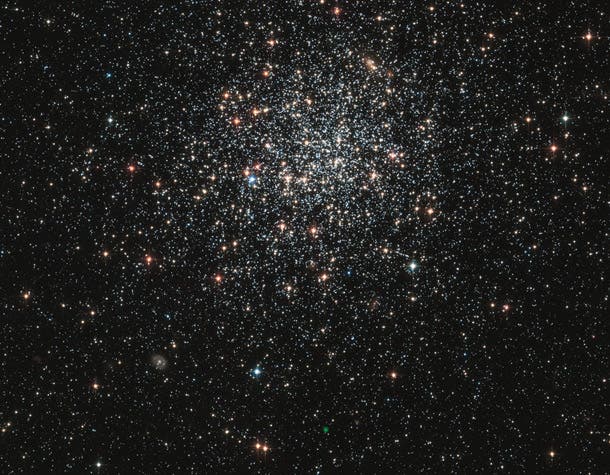The ever faithful Hubble telescope has offered us yet another fantastic glimpse into the Universe’s hidden gems. Captioned below is the NGC 1846 globular cluster, which lies 160,000 light-years away in the constellation Doradus. The cluster is actually the product of the Large Magellanic Cloud, which neighbors our own Milky Way.

Check out this very large, high resolution photo from NASA for a more detailed peak.
Red and blue dots represent aging stars, while middle-aged stars, which are younger than the sun, can be seen in their whitish color. Now, what’s most intriguing about this photo is that green dot. Haven’t seen it yet? Well, check out the high res photo again, head for the center of the cluster and scroll downwards. There you have it. Now, stars aren’t green of course. That’s actually what scientists describe as a planetary nebula – the remnant of a succumbed star, stripped to its bare dense core after it puffed out its gaseous layers. These are extremely rare, and so far only a handful of planetery nebulas have been spotted. To make it increasingly difficult to observe, these last only a few thousand of years before they dim out completely.
RELATED: 12 Hubble pictures that will blow your mind
via






